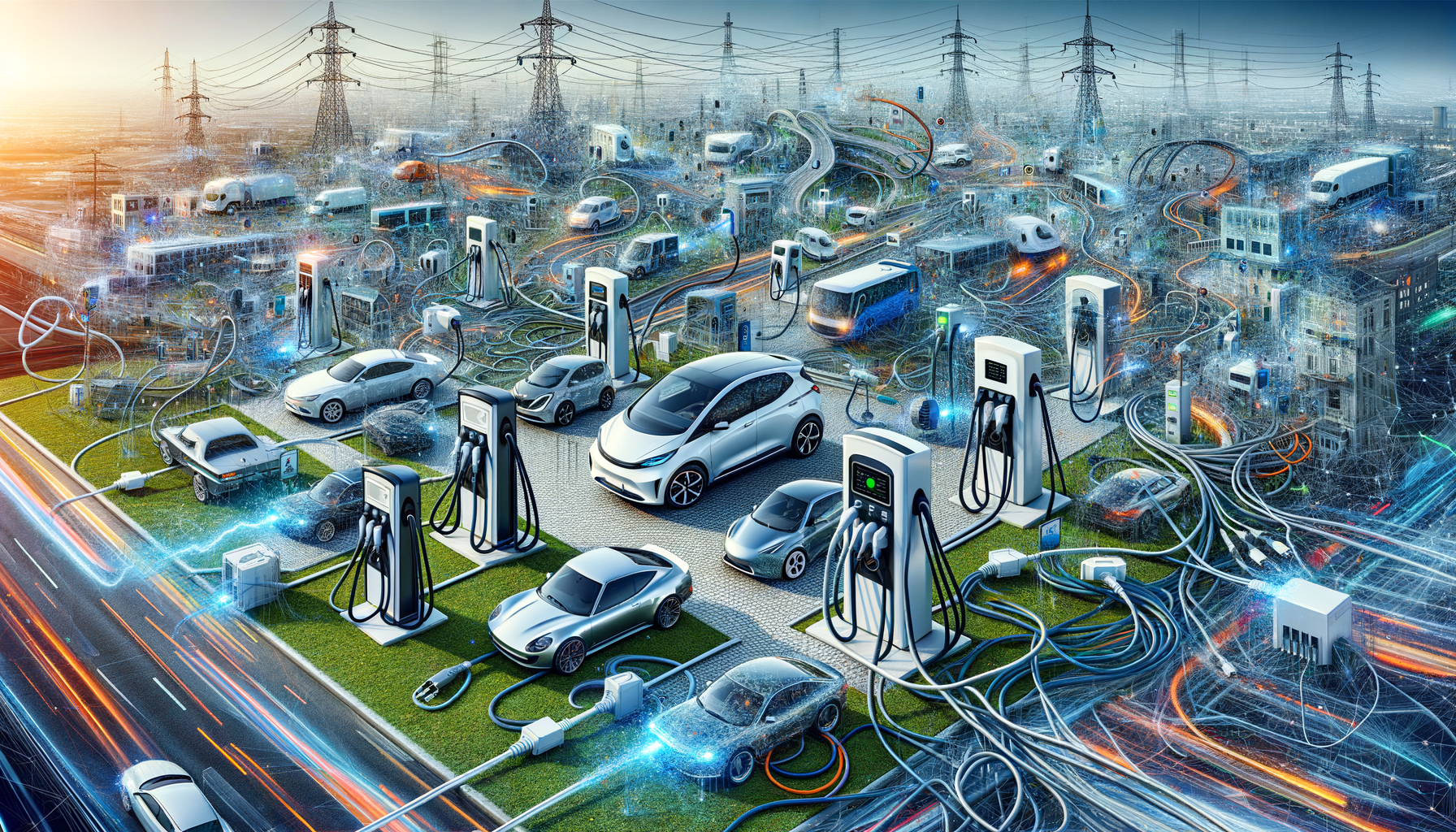Understanding the Types of Electric Vehicle Charging Stations
Electric vehicle (EV) charging stations come in various types, each offering different charging speeds and capabilities. Understanding these types is crucial for anyone considering an EV purchase or those already navigating the EV landscape. Charging stations are generally categorized into three main types: Level 1, Level 2, and DC Fast Charging.
Level 1 chargers use a standard household outlet and provide the slowest charging speed. They are typically used for overnight charging at home. While convenient, they may not be suitable for those who need to travel long distances frequently, as they can take up to 24 hours to fully charge a depleted battery.
Level 2 chargers require a 240-volt outlet, similar to those used by large household appliances. These chargers are faster, taking about 4 to 6 hours to charge an EV. They are commonly found in public spaces, workplaces, and residential areas, providing a practical solution for daily charging needs.
DC Fast Charging stations offer the quickest charging times, capable of charging an EV to 80% in about 30 minutes. These are ideal for long-distance travel and are typically located along highways and major routes. However, they require specialized equipment and are more expensive to install and operate.
Choosing the right type of charging station depends on several factors, including the EV model, daily driving habits, and access to charging infrastructure. As the EV market grows, the availability and technology of charging stations continue to evolve, making it easier for drivers to find a solution that fits their needs.
The Infrastructure Challenge: Building a Network of Charging Stations
As electric vehicles become increasingly popular, the demand for a robust charging infrastructure grows. Building a comprehensive network of charging stations is a significant challenge that requires collaboration between governments, private companies, and local communities.
One of the main hurdles in expanding the charging network is the high cost of installation and maintenance. DC Fast Charging stations, for example, require substantial investment in both hardware and electrical infrastructure. Governments and private companies are working together to provide incentives and subsidies to encourage the development of these networks.
Another challenge is ensuring the equitable distribution of charging stations. Urban areas often see more rapid development, leaving rural and underserved communities behind. Addressing this imbalance is crucial to ensure that all EV drivers have access to charging facilities, regardless of their location.
Innovative solutions are being explored to overcome these challenges. For example, some companies are developing mobile charging units that can be deployed in areas with temporary high demand or during events. Additionally, the integration of renewable energy sources into charging stations is being considered to enhance sustainability and reduce environmental impact.
The successful expansion of the charging infrastructure will play a pivotal role in the widespread adoption of electric vehicles, contributing to a cleaner and more sustainable future.
The Role of Policy and Regulation in EV Charging
Government policies and regulations are critical in shaping the landscape of electric vehicle charging stations. These policies can influence the pace of infrastructure development, the adoption of new technologies, and the overall growth of the EV market.
Many governments worldwide have set ambitious targets for reducing carbon emissions and promoting the use of electric vehicles. To achieve these goals, they are implementing policies that support the development of charging infrastructure. These include financial incentives for installing charging stations, grants for research and development, and mandates for new building constructions to include EV charging capabilities.
Regulations also play a vital role in ensuring the safety and reliability of charging stations. Standards for equipment and installation are established to protect consumers and ensure compatibility across different EV models and charging networks.
Furthermore, governments are exploring ways to integrate EV charging into the broader energy ecosystem. This includes developing smart grid technologies that can manage the increased demand for electricity and support the use of renewable energy sources.
As policies and regulations evolve, they will continue to shape the future of electric vehicle charging, driving innovation and ensuring that the infrastructure keeps pace with the growing number of EVs on the road.
Technological Innovations in EV Charging
The field of electric vehicle charging is rapidly evolving, with technological innovations playing a crucial role in enhancing the efficiency and convenience of charging stations. These advancements are making it easier for EV owners to charge their vehicles and are supporting the broader adoption of electric transportation.
One significant innovation is the development of ultra-fast charging technology, which aims to reduce charging times significantly. Companies are working on chargers that can deliver a full charge in as little as 15 minutes, making EVs more practical for long-distance travel.
Wireless charging is another promising technology that is gaining attention. This involves embedding charging pads in the ground, allowing vehicles to charge without the need for physical connectors. While still in the early stages of development, wireless charging could offer a convenient solution for urban environments and reduce wear and tear on charging equipment.
Smart charging systems are also being developed to optimize energy use and reduce costs. These systems can communicate with the grid to charge vehicles during off-peak hours or when renewable energy sources are abundant. This not only saves money for consumers but also helps balance the overall energy demand.
As technology continues to advance, the future of electric vehicle charging looks promising, with innovations paving the way for a more efficient and user-friendly experience.
Consumer Considerations: Choosing the Right Charging Solution
For electric vehicle owners, selecting the right charging solution is an important decision that can impact their overall experience and satisfaction. Several factors should be considered when choosing a charging station, including convenience, cost, and compatibility with the vehicle.
Convenience is a key consideration for many drivers. Home charging stations offer the ease of charging overnight, while public charging stations provide flexibility for those who travel frequently. It’s important to assess daily driving habits and access to charging facilities when making a decision.
Cost is another critical factor. The price of installing a home charging station can vary widely depending on the type of charger and the electrical work required. Public charging costs can also differ, with some stations offering free charging and others charging by the kilowatt-hour or time spent charging.
Compatibility with the vehicle is essential to ensure efficient charging. Different EV models may require specific types of connectors or have varying charging capabilities. Checking the vehicle’s specifications and consulting with the manufacturer can help determine the best charging solution.
Ultimately, the right charging solution will depend on individual needs and circumstances. By carefully considering these factors, EV owners can make informed decisions that enhance their driving experience and support the transition to sustainable transportation.








